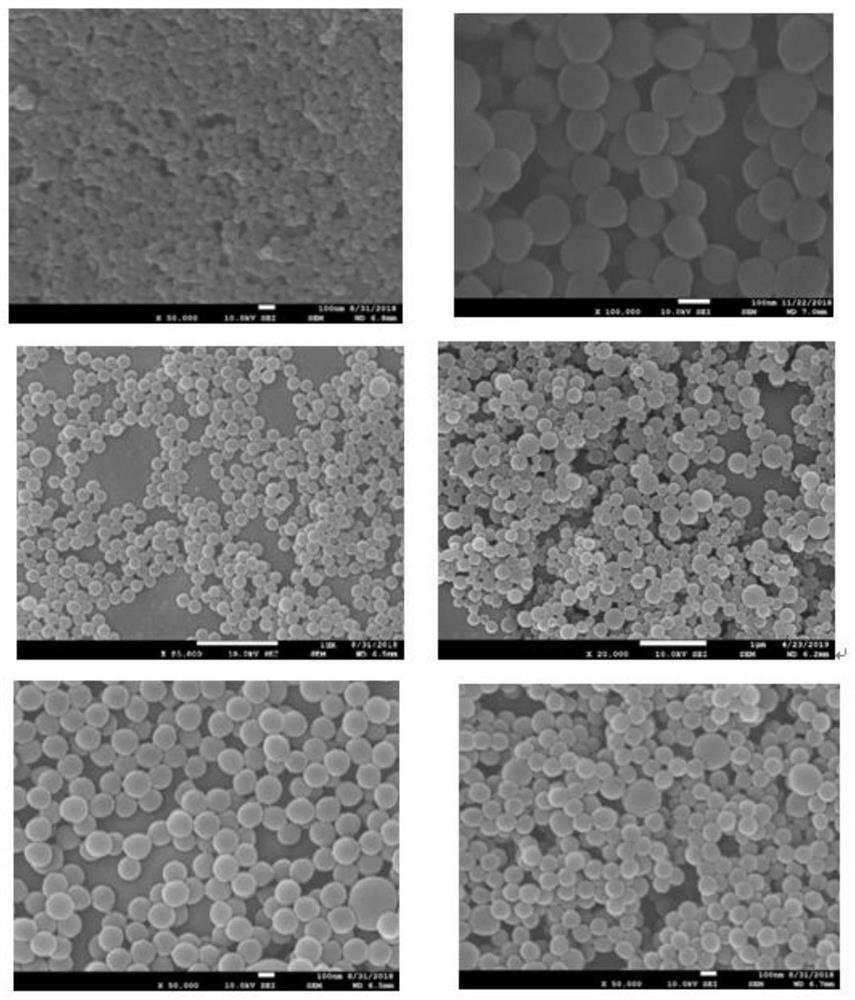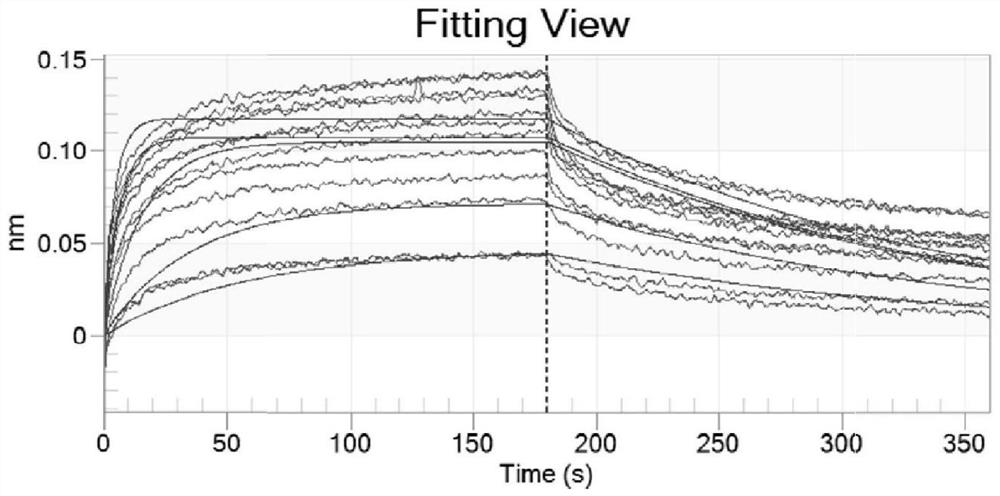Preparation method and use of a non-biological nano-artificial antibody specifically targeting Alzheimer's disease markers
An artificial antibody, non-biological technology, applied in the field of bio-nanomedicine, can solve the problems of long screening period, immunogenicity and variability, and achieve the effects of overcoming long preparation period, shortening screening time and high stability
- Summary
- Abstract
- Description
- Claims
- Application Information
AI Technical Summary
Problems solved by technology
Method used
Image
Examples
Embodiment 1
[0029] Example 1: Preparation of non-biological nano-artificial antibodies targeting pathological markers of Alzheimer's disease based on three-dimensional structure modification and reconstruction of nanoparticles
[0030] 1. Design and synthesis of nanoparticles
[0031] N-isopropylacrylamide (58-X mol%), charged monomer N-(3-dimethylaminopropyl) methacrylamide (X mol%), N-tert-butylacrylamide ( 40 mol%), the crosslinker N,N'-methylenebisacrylamide (2 mol%) and sodium dodecylsulfonate (10 mg) were dissolved in water to give a total monomer concentration of 130 mM. After adding the initiator, polymerization was carried out at 65° C. for 3 hours with a magnetic stirrer under a nitrogen atmosphere. The polymerized solution was purified by dialysis against excess pure water, and the polymer nanoparticles were obtained after freeze-drying ( figure 1 ).
[0032] 2. Preliminary screening of artificial antibodies
[0033] The selected target protein is β-amyloid protein, but the...
Embodiment 2
[0036] Example 2: Raman imaging of β-amyloid nanoartificial antibodies on brain tissue slices
[0037] First, to synthesize gold nanoparticles with smaller diameter, 0.0255g HAuCl 4 Dissolve in 255g of water, heat to boil and then add 15g of 1% sodium citrate aqueous solution to the solution. After the solution turns wine red, continue to boil for 15min, then cool naturally to room temperature. The gold nanospheres were then concentrated 20 times by centrifugation. The concentrated nano-gold balls are connected to the dye DTNB, and the nano-gold balls connected to the dye are added in the process of synthesizing the nanoparticles, and the nano-gold balls are wrapped into the nanoparticles, and the transmission electron microscope (TEM) and the scanning electron microscope ( SEM) such as image 3 shown. Carry out Raman depth scanning to determine the characteristic peaks ( Figure 4 ).
[0038] Then, the paraffin-encapsulated human brain tissue slices were treated with xyl...
Embodiment 3
[0039] Example 3: Fluorescent imaging of β-amyloid nanoartificial antibodies on brain tissue slices
[0040] Firstly, after dialyzing the synthesized nanoparticles, activate the nanoparticles. 1 mL of nanoparticle solution needs to add 5 mg of EDC and 2.5 mg of NHS, and activate it in a shaker at 4° C. for 12 hours. Then, 10 μL of FITC was added to each mL of nanoparticle suspension, and reacted in a shaker at 4° C. for 24 h, protected from light.
[0041] Then, the paraffin-encapsulated human brain tissue slices were treated with xylene and gradient concentration of ethanol, and the synthesized nanoparticles were added dropwise to the slices, and the slices were incubated in a humid box at room temperature for 60 min, and then washed with PBS buffer. The slices were rinsed with 0.1M NaCl solution and dried with nitrogen gas. Laser confocal imaging was then performed.
PUM
| Property | Measurement | Unit |
|---|---|---|
| particle diameter | aaaaa | aaaaa |
Abstract
Description
Claims
Application Information
 Login to View More
Login to View More - R&D
- Intellectual Property
- Life Sciences
- Materials
- Tech Scout
- Unparalleled Data Quality
- Higher Quality Content
- 60% Fewer Hallucinations
Browse by: Latest US Patents, China's latest patents, Technical Efficacy Thesaurus, Application Domain, Technology Topic, Popular Technical Reports.
© 2025 PatSnap. All rights reserved.Legal|Privacy policy|Modern Slavery Act Transparency Statement|Sitemap|About US| Contact US: help@patsnap.com



